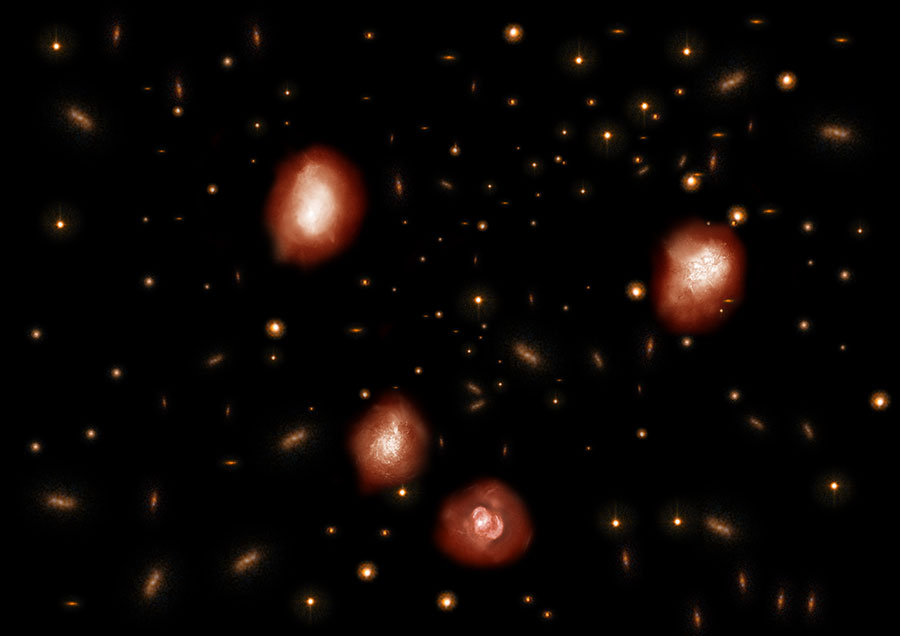ALMA Identified Dark Ancestors of Massive Elliptical Galaxies―Unexpected Hidden Galaxies Question Theories of Universe Evolution
| Science

Researchers using the Atacama Large Millimeter/submillimeter Array (ALMA) identified 39 faint galaxies that are not seen with the Hubble Space Telescope’s deepest view of the Universe 10 billion light-years away. They are 10 times more numerous than similarly massive but optically–bright galaxies detected with Hubble. The research team assumes that these faint galaxies are the ancestors of massive elliptical galaxies in the present Universe, however interestingly, no major theories for the evolution of the Universe have predicted such a rich population of star-forming, dark, massive galaxies. The new ALMA results throw into question our understanding of the early Universe. These results are published in the latest issue of the journal Nature.
These observation results are published as T. Wang et al. “A dominant population of optically invisible massive galaxies in the early Universe” in Nature on August 7, 2019.